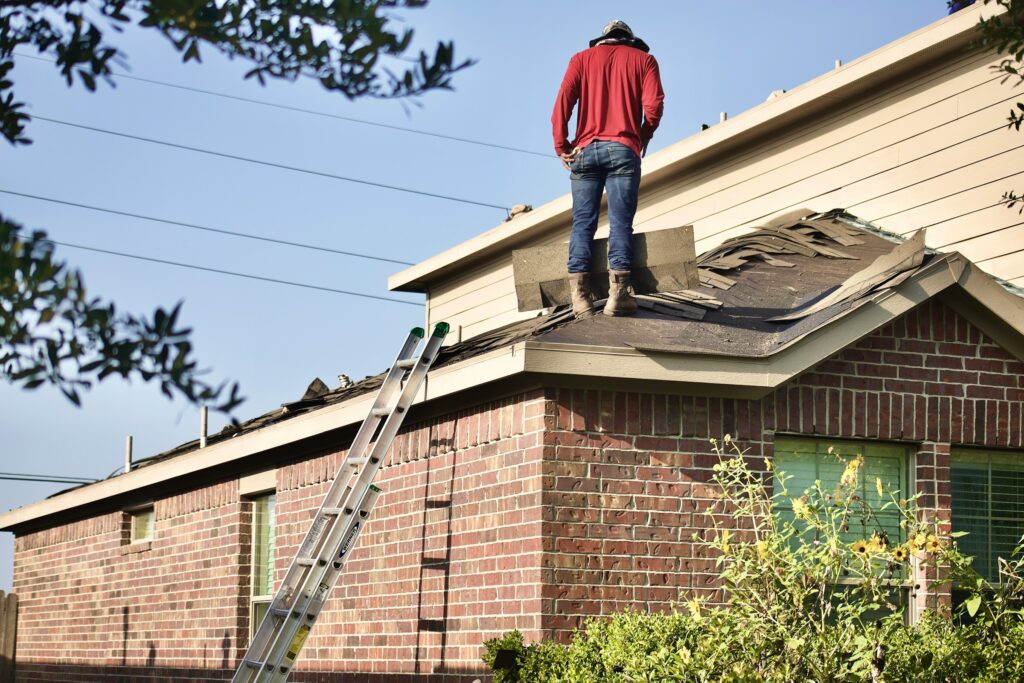Gutters serve a vital role in protecting your home’s foundation by channeling rainwater away from walls, windows, and the basement. But while gutters are essential, they also require regular maintenance. Debris like twigs, leaves, and dirt can accumulate, causing clogs and overflow—sometimes leading to water damage and costly repairs.
Enter gutter guards: specialized covers or inserts designed to keep gutters clear of debris. They claim to reduce or eliminate the need for regular cleaning, promising a more hands-off approach to gutter care. Yet for many homeowners, the question remains: Are gutter guards truly worth the cost? Below, we’ll explore various types of gutter guards, their price ranges, installation factors, and the long-term benefits and potential pitfalls. By the end, you’ll have the background you need to decide whether gutter guards are a worthwhile investment for your home.
What Are Gutter Guards?
Gutter guards are devices engineered to block leaves, pine needles, twigs, and other debris from entering your gutter system. Several styles are on the market, each with its own strengths, weaknesses, and cost implications. Common designs include:
- Mesh Screens: Fine mesh that fits over or inside the gutter channel to filter water while deflecting larger debris.
- Micro-Mesh: A tighter weave than standard mesh, capable of blocking even small particles like pine needles and shingle grit.
- Reverse-Curve (or Surface Tension) Guards: Curved covers that rely on the surface tension of water to pull water into the gutter while shedding debris off the edge.
- Foam Inserts: Porous foam that sits in the gutter, allowing water to pass through but trapping leaves on the surface.
- Brush Guards: Cylindrical brushes inserted into the gutter. Debris accumulates on top, ideally blown away by the wind, leaving gutters free for water flow.
Each type promises less debris accumulation—but they also differ in cost, efficiency, lifespan, and ease of installation. Understanding these factors is essential to figure out which—if any—gutter guard system matches your home’s needs.
Upfront Costs: A Range of Options
Prices for gutter guard products and installation can vary widely, depending on materials, the size and height of your home, and the complexity of your gutter layout. Roughly speaking:
- DIY Mesh or Screen Guards: Start around $1–$3 per linear foot if installing them yourself. They’re often available at local home-improvement stores, making them an affordable entry-level choice.
- Micro-Mesh Systems: Tend to be more durable and effective, often ranging from $2–$6 per linear foot. They may require professional installation for best results.
- Reverse-Curve Systems: Can range from $3–$10—sometimes even more—per linear foot, including installation. Certain manufacturers require professional installation to honor warranties.
- Foam Inserts or Brush Guards: Typically $2–$5 per linear foot. While fairly simple to install, these systems may need replacement more frequently due to material breakdown or debris entanglement.
For an average home with about 150–200 linear feet of gutters, a professionally installed system can easily cost from $300 on the low end (basic screens) to more than $2,000 for premium, custom-fitting gutter guard products.
Installation Factors: DIY vs. Professional
Once you’ve chosen a type of gutter guard, you’ll need to decide how to install it. Going the do-it-yourself route can help you save on labor costs, but it also comes with its own requirements:
DIY Installation Considerations
- Time and Effort: Even simpler mesh guards need to be measured, cut, and secured. Expect to spend several hours (or more) on the project.
- Proper Sealing and Fastening: If not installed correctly, guards can shift or blow away, leading to debris accumulation underneath or along the edges.
- Ladder Safety: Climbing ladders is dangerous if you’re inexperienced. For multi-story houses, many homeowners prefer hiring a pro simply to avoid the safety risks.
- Warranty Coverage: Some higher-end products insist on professional installation to maintain full warranty coverage.
Professional Installation Advantages
- Expertise: Pros know the nuances of ensuring each guard aligns properly with the roofline and gutter slope.
- Speed: A professional crew can often complete the job in a day or less, regardless of home size.
- Warranty and Maintenance: Reputable companies typically offer warranties on both materials and labor, giving you peace of mind about future repairs or replacements.
- Roof Inspection: While installing guards, professionals may spot potential roofing or gutter issues, allowing you to fix them before they become bigger problems.
Long-Term Maintenance Savings
The primary selling point for gutter guards is reduced maintenance: fewer or zero gutter cleanings each year. Let’s see what that might mean for you.
Less Frequent Cleaning
- Typical Gutter Cleaning: Organized homeowners often have their gutters cleaned twice a year—once in late spring and once in late fall—to remove leaves, seeds, and debris. According to some professionals, each cleaning can set you back $100–$300 or more, depending on your home’s size and the accessibility of the gutters.
- Gutter Guards’ Impact: A functional guard system can slash this frequency, potentially dropping cleanings to once a year or even less often. Over time, these savings may offset the cost of the guard—even if it isn’t entirely zero maintenance.
Fewer Clogs and Overflows
- Preventing Water Damage: When gutters clog, water can pool or overflow. This may result in damage to fascia boards, siding, and your home’s foundation. It can even create slippery walkways or basement leaks. Gutter guards can help you avoid many such repair bills.
- Seasonal Considerations: Homes near lots of trees or in areas with heavy storms will see more immediate benefits. If your gutters fill up with leaves just weeks after cleaning, you might recoup the cost of gutter guards faster than someone living in a region with sparse tree coverage.
However, note that while guards greatly reduce large debris buildup, fine particles like shingle grit can still accumulate over time. That might mean you need to clean the guards themselves or the gutters beneath them once every one or two years—though less frequently than bare gutters.
Potential Drawbacks and Ongoing Maintenance
No product is perfect, and gutter guards have some trade-offs you should be aware of:
Debris Can Lodge on Top or in Corners
- Reverse-Curve Drips: If leaves cluster at the edge of a reverse-curve system, they may not blow off as intended, creating a stubborn blockade.
- Mesh Clogging: Micro-mesh guards can become clogged with fine dirt or pollen, restricting water flow unless occasionally rinsed.
- Foam Degradation: Foam inserts can break down over time, especially under heavy UV exposure or constant moisture, requiring periodic replacement.
Ice Dams in Winter
- Accumulation on Edge: In colder climates, gutter guards can sometimes encourage icicles to form along the edge of the roof. However, the same issue can happen on unguarded gutters—so while guards don’t necessarily make ice formation worse, they also won’t solve a pre-existing ice problem.
- Ventilation and Insulation: Addressing attic insulation and roof ventilation is more important for controlling ice dams than gutter guards alone.
Warranty Considerations
- Voided Roof Warranty: Some roofing warranties specify which add-ons or modifications are permissible. If gutter guards require nails or screws that penetrate shingles, it could impact your roof coverage. Always verify installation procedures and manufacturer guidelines before making any changes.
Overall, gutter guards still involve a mild level of upkeep—cleaning or adjusting them occasionally to ensure they remain debris-free and water flows smoothly.
Common Gutter Guard Types: Pros and Cons
Let’s examine the basics of each style to see how they stack up.
| Type | Cost per Linear Foot (Approx) | Pros | Cons |
| Screen/Mesh | $1–$6 | Affordable, easy to installBlocks most debris | Can warp or rustMay still need occasional cleaning |
| Micro-Mesh | $2–$6 | Excellent for small debris like pine needlesGood durability | More expensivePotential for fine sediment buildup |
| Reverse-Curve | $3–$10+ | Effective at shedding leavesOften requires pro install | Higher upfront costDebris can build up at the edge |
| Foam Inserts | $2–$5 | Simple DIY installationLight and flexible | May degrade under UVRequires periodic replacement |
| Brush Guards | $2–$5 | Easy to remove and cleanLight and flexible | Leaves can tangleMay not be ideal for small debris |
While these general categories provide a starting point, you’ll find variations in material thickness, coatings, or brand-specific designs that influence overall performance.
Are Gutter Guards Worth It for Every Home?
- Tree Density: If your yard is surrounded by tall trees, especially deciduous ones that drop lots of leaves, gutter guards can save you from constant clogs. In pine-heavy regions, micro-mesh can be a big help because pine needles are notoriously small and sticky.
- Roof Design: Multi-story homes or those with complex rooflines—dormers, valleys, multiple slopes—are harder and riskier to clean or maintain. In these cases, gutter guards can offer peace of mind (and potentially pay for themselves in saved cleaning fees).
- Local Climate: If you live in an area with intense storms or heavy rain, ensuring free-flowing gutters is critical. Regular downpours can quickly reveal any weaknesses in your drainage system. Gutter guards that are well-designed for high-volume water flow can reduce the risk of overflow.
- Homeowner Capabilities: Climbing ladders and cleaning gutters isn’t for everyone. Older homeowners or those with mobility challenges might find the cost of gutter guards justifiable simply to avoid repeated ladder work or hiring frequent gutter-cleaning services.
On the other hand, if you live in a relatively leaf-free environment or if your home only has single-story gutters you can safely clear with minimal hassle, a full investment in gutter guards may be less of a priority.
Real-World Examples
Example A: The Wooded Suburban Home
- Facts: A two-story home near tall oaks and maples experiences heavy leaf fall every autumn. The homeowner typically schedules professional cleanings twice a year, at $250 each time. Over five years, that amounts to $2,500.
- Decision: They choose a mid-grade micro-mesh system costing $1,800 (including professional installation).
- Outcome: Cleanings drop to once every two years to remove the occasional buildup of fine debris, costing $250 each time. Over five years, they spend just $1,800 on the system plus $250 for one cleaning—$2,050 total—an overall savings of $450 compared to their previous cleaning routine. And beyond that point, their year-to-year costs remain lower.
Example B: The Low-Debris Starter Home
- Facts: A bungalow in a new development with few mature trees. The homeowner cleans the gutters themselves once a year, investing only a couple of hours and a sturdy ladder.
- Decision: Installing a $1,200 reverse-curve system feels hefty since there’s not much debris.
- Outcome: Because it’s easy to do a quick yearly cleaning themselves, they stick with no gutter guards. The homeowner uses that $1,200 on other improvements. Over ten years, they might spend a fraction of that on routine upkeep—while never experiencing severe clogs.
These simplified scenarios show how the cost/value equation changes depending on one’s specific environment, budget, and maintenance style.
Tips for Researching and Choosing Gutter Guards
- Read Reviews Thoroughly: Look for unbiased consumer feedback, not just marketing claims. The Family Handyman and This Old House often share practical comparisons of different gutter guard systems.
- Ask for References: If you’re hiring a pro installer, request contact information for past clients. Ask homeowners about their experience over different seasons.
- Check Local Building Codes: Some regions, especially those with heavy snowfall, might have rules on gutter modifications, or require ice and water shields near the roof edges.
- Evaluate Warranties: Look at what’s covered and for how long. In some cases, the guard’s warranty and labor warranty are separate. A comprehensive warranty suggests the manufacturer has confidence in the product’s performance.
Final Thoughts: Balancing Convenience and Cost
Gutter guards can offer substantial benefits—mainly reducing your biannual chore list and mitigating risks of costly water damage. Yet they’re not a magic, one-time solution for all contexts. Even the most effective designs might require periodic checkups or cleaning. And depending on where you live, the trees in your yard, and how comfortable you are with regular ladder work, the cost-to-value ratio can vary widely.
- If your home sits in a leafy area and you routinely pay for multiple professional cleanings each year, a well-chosen gutter guard system can pay for itself within five years—or less.
- If you have easy-to-reach gutters and only need minimal debris removal, the return on investment for a top-of-the-line guard system may be less compelling.
- Regardless of your choice, always ensure your gutters drain properly, remain securely fastened to your home, and that your roof’s fascia and soffits—common places for water damage—are in good shape.
Ultimately, the true cost of gutter guards comes down to how much time, money, and effort you’re saving by avoiding frequent cleaning or water-related home repairs. For many homeowners, the peace of mind afforded by a reliable gutter system is worth the initial investment. For others, a DIY attitude and a tall ladder might serve just as well. By considering the factors outlined here—local conditions, types of gutter guards, installation details, and ongoing maintenance—you can weigh all the pros and cons to decide if gutter guards are truly worth it for your situation.




